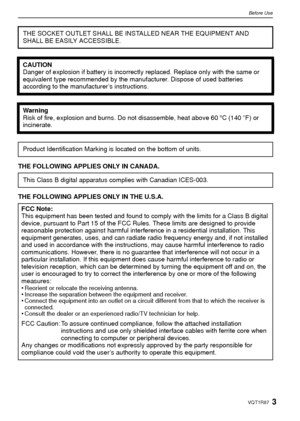Panasonic Dmc Fx37 Manual
Download and view instructions PANASONIC DMC-FX37 The camera/ Camera online. Click to go to download PANASONIC DMC-FX37 The camera/ Camera for free. Kastar 2X Battery + Charger for Panasonic Lumix CGA-S008 DMW-BCE10 VW-VBJ10E BP-DC6 & Panasonic Lumix DMC-FX520 SDR-S25 SDR-S26 DMC-FS20 DMC-FX37 DMC-FX55 DMC-FX500. High quality printed and bound Panasonic Lumix FX37 manual.
• Pros Very compact. Records HD video (1,280 by 720 at 30 frames per second).
Solid controls. Fast boot-up and recycle times. Unlisurf Globe Prepaid Hack on this page. • Cons Moderate amount of color fringing.
Subpar sharpness for a 10-megapixel camera. Noticeable shutter lag. LCD shows considerable motion blur. • Bottom Line The Panasonic Lumix DMC-FX37 can record gorgeous HD video, but it loses points for so-so still images, which exhibit some color fringing. Realtek Rtl8187b Wireless 80211b/g 54mbps Usb 20 Network here.
The cute and compact Panasonic Lumix DMC-FX37 offers some competitive features including HD video capture (1,280 by 720 at 30 frames per second), but its still-image sharpness is not on a par with other 10-megapixel cameras. In a crowded sea of similar point-and-shoot cameras, it's hard to get excited about this oneespecially given its high price ($349.95 direct). Like the FX35, the FX37 features a wide-angle lens, which we're seeing more and more in point-and-shoot cameras.

The lens retains the traditional 4:3 aspect ratio, but offers a wider scope. It sports 5X optical zoom (up from 4X in the FX35) with a focal length of 4.4mm to 22mm (35mm equivalent: 25mm to 125mm) and corresponding maximum f-stops of f/3.3 and f/5.9. Motion blur is noticeable on most digital camera's LCDs, but it's particularly distracting on the FX37's 2.5-inch screen, especially when the lens is at its telephoto position (extended all the way out). At this position, a subject in motion or slight camera movements turn objects on the screen into smears of light, making it difficult to frame shots. The screen is viewable in most lighting conditions, but like most camera displays, on particularly sunny days it can be a bit difficult to view images on screen, and there's no viewfinder. Most of the FX37's competitors have larger and faster screens, but the has the best display we've seen, since it uses a high-contrast, low motion-blur AMOLED panel.
The camera's user interface is intuitive, and its controls cut down on the likelihood of pressing the wrong button. The controls for power and toggling between shooting and playback modes are switches, rather than buttonsso you can't accidentally exit playback mode by hitting the shutter-release button, as you can on the.
You'd have to move the switch to do so. The switches also prevent you from accidentally shutting the camera down when you mean to press the shutter button. Even the powerhouse, which is otherwise easy to use, has a problematic, hard-to-press power buttonso I appreciate the FX37's controls. Panasonic also throws in a dial to switch between Manual, Automatic, and Movie modes, and a trigger-style button for zooming in and out, which I prefer over dedicated buttons that require you to move your finger back and forth, as on the Finepix z200fd. The FX37 is jam-packed with preset scene modes, along with face detection and autofocus tracking, both of which worked well.
When snapping a picture of a friend, the camera was able to identify his face and profile. When the camera or the subject moved, the FX37 stayed locked on the face and was able to refocus quickly. Its most nifty feature was 'audio recording,'.
In which the camera snaps a shot, then records 5 seconds of audio after it. You'll have a 5-second MOV video that shows the static image while the recorded audio plays over it. When it comes to judging a camera's output, we rely on Imatest ( www.imatest.com), a testing suite that assesses image sharpness, noise level, and overall image quality. The FX37 did well in delivering images with small amounts of noise up to ISO 400. At the same ISO setting (ISO 400), shots from the similarly priced showed almost twice as much noise.